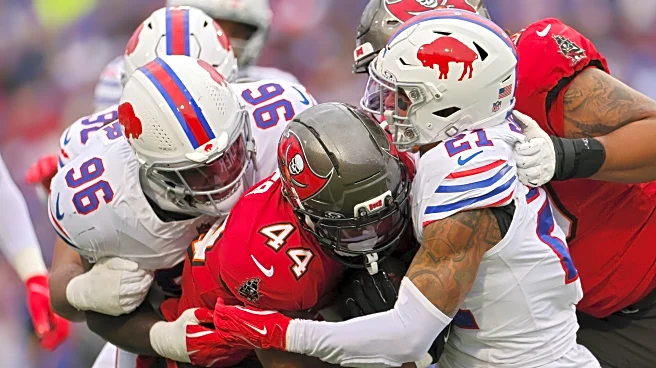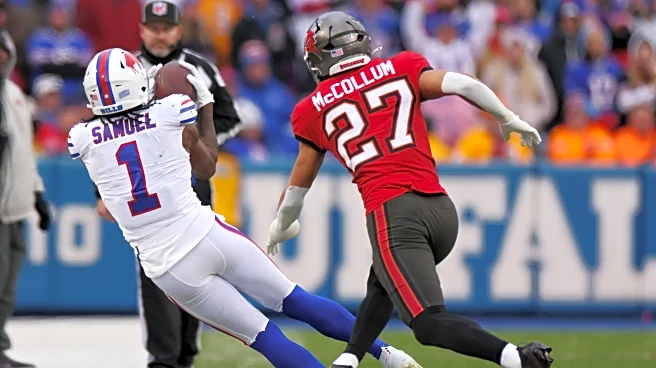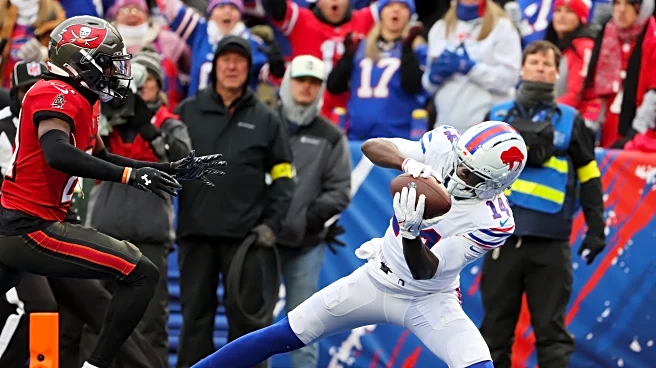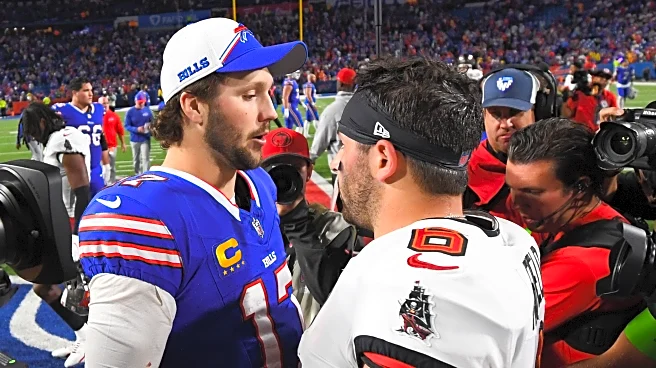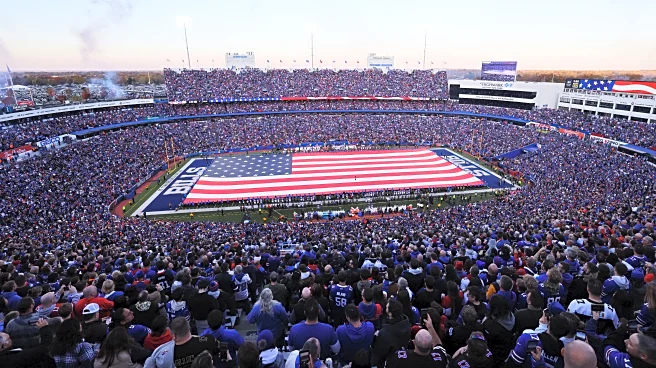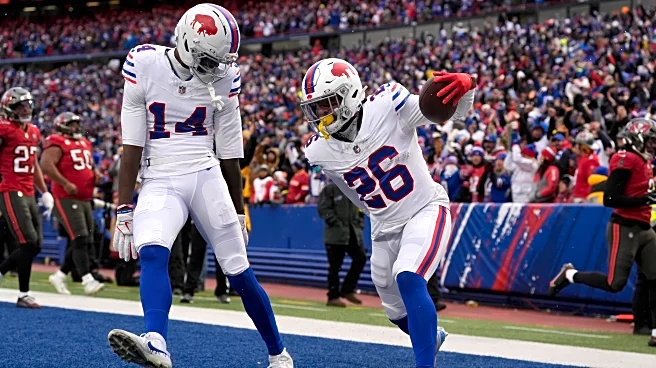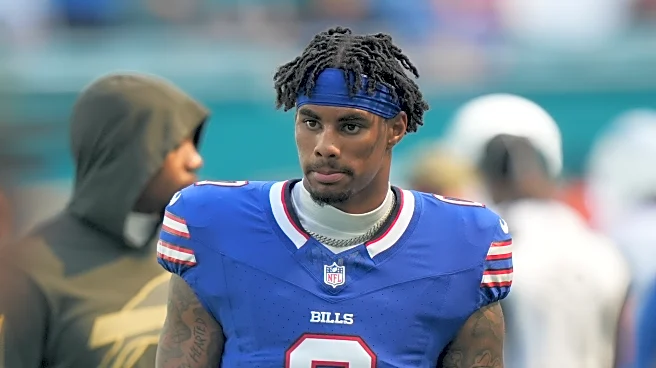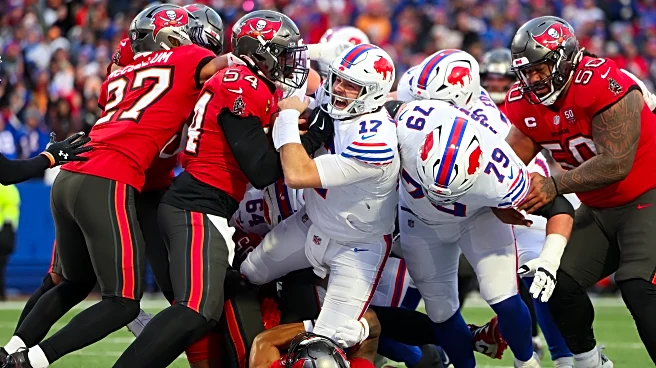The Buffalo Bills’ offense made a lot of progress in restoring faith in the team this past weekend as quarterback Josh Allen and friends accounted for six touchdowns against the Tampa Bay Buccaneers. Along the way the officials tossed a few flags and I know that’s the story everyone actually wants to know about, so let’s dive into the penalty data!
Standard and Advanced Metrics
Penalty Counts

Well this looks pretty lopsided doesn’t it? The Bills were pretty average compared to the league, and Tampa Bay comfortably fell below league average.
Perhaps the biggest oddity here is that it’s very rare to have more flags declined than accepted, but that’s just what the Buccaneers did.
Also, if you’re paying attention to the charts, I’ll assure you that this is a slightly different shade of orange than last week.
Penalty Yards

Continuing with our oddball theme here, despite the lopsided counts, the yardage was a lot closer to even. It took effort from both teams to close the gap. Buffalo averaged 6.4 yards per flag, which is a little on the low side. Tampa Bay averaged 15 yards per flag, which is incredibly high for an average.
When it comes to yards negated/impacted by flag, the Bills surprisingly had zero. The Buccaneers weren’t far behind with a scant two yards negated.
Penalty Harm
Tampa Bay Buccaneers

As noted, the Buccaneers had more flags declined than accepted, leading to only two gray bars for their Harm calculations. The rouging the passer flag from defensive end Logan Hall was yardage only and came on the same play as the defensive holding flag cornerback Benjamin Morrison, which was declined for obvious reasons.
The vast majority of the Bucs’ 5.2 Harm total belongs to cornerback Jacob Parrish’s face mask flag. The 15 yards assessed was accompanied by two yards negated. Wide receiver Khalil Shakir had been tackled for a loss on the play, which was wiped out. It was also a third-down play, giving up two free downs in the process. For the formula lovers, that’s 15 yards + 2 yards + 2 downs. Translated to Harm that’s 1.5 + 0.2 + 2.0 = 3.7.
The ineligible downfield pass call was pretty routine, but the delay of game on Tampa Bay is semi-odd with it being declined. Why would Buffalo give up five yards? It’s not like it gave the Bucs a down back or anything. The answer lies in field position. The delay came on a 4th & 5 at the Bills’ 43-yard line. Accepting the flag would have given the punter a little more breathing room. The wisdom behind the decision is that the punt is more likely to be a touchback when kicked from the 43 rather than the 48. It wasn’t. The punt went out of bounds at the eight but it’s not a bad thought process.
Buffalo Bills

Buffalo wasn’t much higher with total Harm, with a cumulative total of 7.5 Harm. Neither team was really impacted all that much by the yellow laundry. Buffalo, though, had a couple of weird ones that you don’t seem too often. The weird ones were back-to-back too. I’ll cover the math for the most part up here, with a consolidated film review in just a moment to see the oddballs and a couple more.
Left tackle Dion Dawkins was hit for two false-start flags. These flags are generally ho-hum, but when a single player gets two in one game that’s a yikes moment. Linebacker Matt Milano’s neutral zone infraction was also of the ho-hum variety.
Josh Allen’s illegal forward pass looked lateral to me live, but I was at the game and had a pretty distant and poor angle on it. The replay was pretty clear that it traveled forward, and this was the right call. This is a weird penalty because in this instance the down counts, similar to an intentional grounding flag. This is the reason for the 1.5 Harm rating. The flag itself was a paltry five yards, but it did cost Buffalo a down.
I’ll make sure you get a look at right tackle Alec Anderson’s defensive holding call below, but for the math this is a great example of how stats can be flawed, even ones I invented. With only five seconds left in the first half, the Bills blocked the Buccaneers’ short field goal attempt, which would have ended the half. The flag on Anderson allowed a re-kick which was made.
I only assess things that happened on the play in question. I could tack on 3.0 Harm to match the resulting field goal, but that precedent is one I won’t be setting. What if Tampa Bay felt comfortable going for it with the ball moving five yards closer and scored a touchdown? What if there was enough time to run two plays and they threw an incomplete? I can think of hypotheticals that other teams might have done, so to make the formula consistent we’ll stick with the result of the play itself which was no change in score. That does mean that we all know this play was a literal three-point swing, even if I don’t label it as such.
To save a little time, I won’t be adding the Joey Bosa roughing call on defensive end Joey Bosa below. The stadium replay I assume was also shown at home and it’s pretty clear that Bosa went into Baker Mayfield’s legs for a clear penalty.
The Film
I’ll apologize here. I’m in a bit of a time crunch here and had a lot I wanted to review from this game. It’s a bit of a shortcut to put all of these in one longer video for my end, but I know it can make it harder to tie the clips to the talk. Hopefully it’s easy enough to follow as presented.
Here are my thoughts on each of the items in the clips:
- I know I get a lot of flak for being a ref apologist, but if I see a missed call I have no problem pointing it out. And this call both my friend and I saw from the stand. To give more perspective, we were sitting in the end zone staring at the play at the angle you see here. Or in other words, we saw this clearly from a very long distance. This is a missed block in the back that sent safety Jordan Poyer reeling. That would have called the touchdown back.
- For the roughing call, the hit itself is clean by Logan Hall. If he had braced for the fall by putting a hand down to prevent all his weight from landing on Allen this is a good play. It would have been wiped out by the defensive holding call on the play as noted above, but you get the idea.
- Speaking of defensive holding, I guess I can see how the official behind Alec Anderson saw the offensive lineman fall and assumed there was more force than there was. Essentially Anderson didn’t do anything more than place his hand on offensive lineman Benjamin Chukwuma’s back. A forceful shove would be a legitimate flag, but this looks like a bad call. It’s rare to see a holding call in play near the line, let alone a blown call to that effect.
- Finally, I wanted to get a look at the delay-of-game flag from defensive end Javon Solomon, and my hunch was correct. Solomon swipes at the ball while the Buccaneers want to scramble to get the next thing going. Batting or moving the ball between downs is correctly called as a delay of game.
